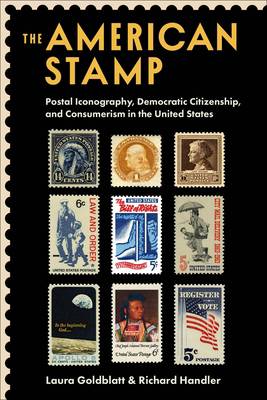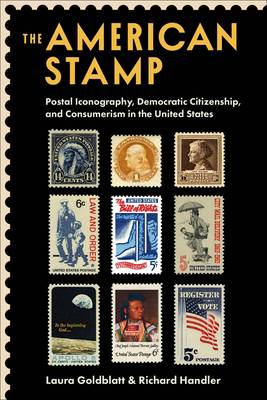
- Retrait gratuit dans votre magasin Club
- 7.000.000 titres dans notre catalogue
- Payer en toute sécurité
- Toujours un magasin près de chez vous
- Retrait gratuit dans votre magasin Club
- 7.000.000 titres dans notre catalogue
- Payer en toute sécurité
- Toujours un magasin près de chez vous
The American Stamp
Postal Iconography, Democratic Citizenship, and Consumerism in the United States
Laura Goldblatt, Richard Handler
Livre relié | Anglais
46,95 €
+ 93 points
Description
More than three thousand different images appeared on United States postage stamps from the middle of the nineteenth century to the end of the twentieth. Limited at first to the depiction of a small cast of characters and patriotic images, postal iconography gradually expanded as the Postal Service sought to depict the country's history in all its diversity. This vast breadth has helped make stamp collecting a widespread hobby and made stamps into consumer goods in their own right.
Examining the canon of nineteenth- and twentieth-century American stamps, Laura Goldblatt and Richard Handler show how postal iconography and material culture offer a window into the contested meanings and responsibilities of U.S. citizenship. They argue that postage stamps, which are both devices to pay for a government service and purchasable items themselves, embody a crucial tension: is democracy defined by political agency or the freedom to buy? The changing images and uses of stamps reveal how governmental authorities have attempted to navigate between public service and businesslike efficiency, belonging and exclusion, citizenship and consumerism. Stamps are vehicles for state messaging, and what they depict is tied up with broader questions of what it means to be American. Goldblatt and Handler combine historical, sociological, and iconographic analysis of a vast quantity of stamps with anthropological exploration of how postal customers and stamp collectors behave. At the crossroads of several disciplines, this book casts the symbolic and material meanings of stamps in a wholly new light.Spécifications
Parties prenantes
- Auteur(s) :
- Editeur:
Contenu
- Nombre de pages :
- 368
- Langue:
- Anglais
Caractéristiques
- EAN:
- 9780231208246
- Date de parution :
- 31-01-23
- Format:
- Livre relié
- Format numérique:
- Genaaid
- Dimensions :
- 157 mm x 231 mm
- Poids :
- 657 g







